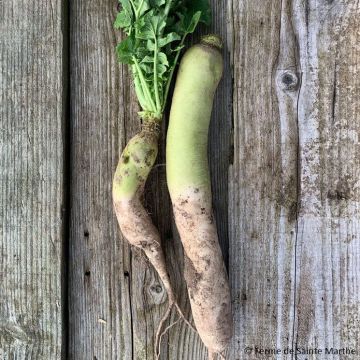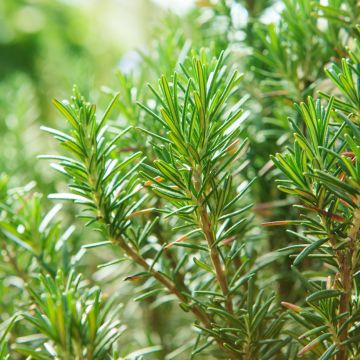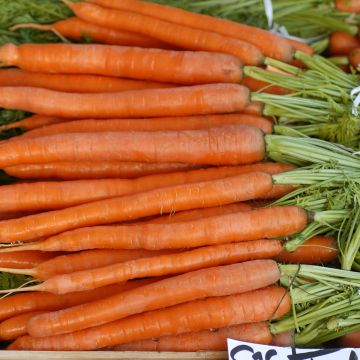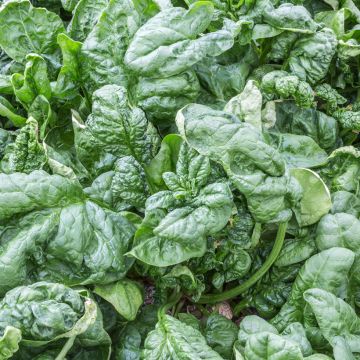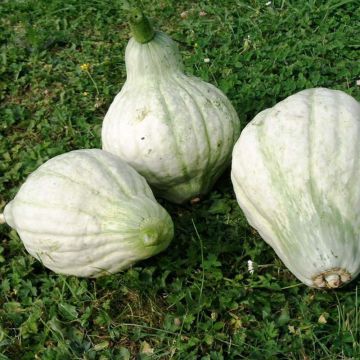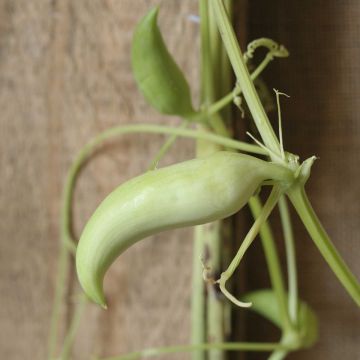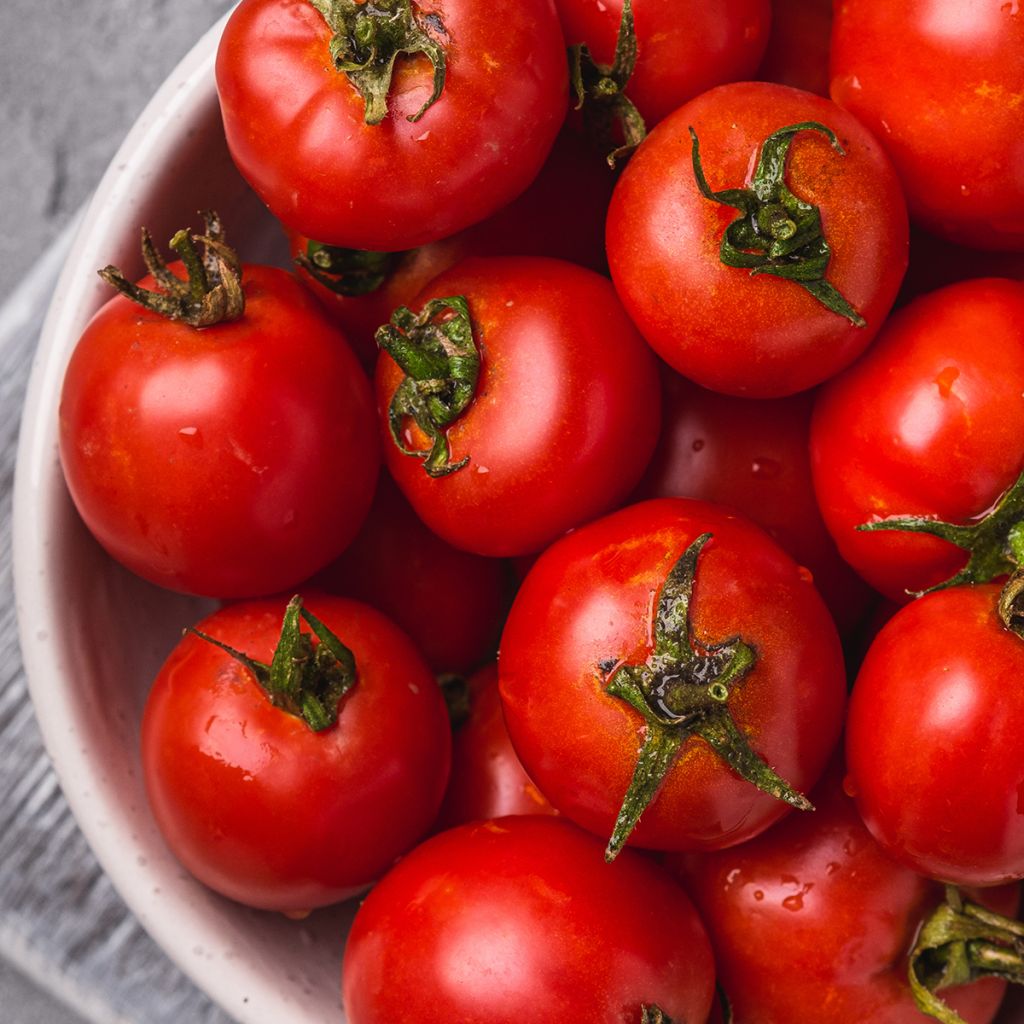

Pépite F1 Tomato - Vilmorin seeds
Pépite F1 Tomato - Vilmorin seeds
Solanum lycopersicum Pépite
Tomato
Special offer!
Receive a €20 voucher for any order over €90 (excluding delivery costs, credit notes, and plastic-free options)!
1- Add your favorite plants to your cart.
2- Once you have reached €90, confirm your order (you can even choose the delivery date!).
3- As soon as your order is shipped, you will receive an email containing your voucher code, valid for 3 months (90 days).
Your voucher is unique and can only be used once, for any order with a minimum value of €20, excluding delivery costs.
Can be combined with other current offers, non-divisible and non-refundable.
Home or relay delivery (depending on size and destination)
Schedule delivery date,
and select date in basket
This plant carries a 6 months recovery warranty
More information
We guarantee the quality of our plants for a full growing cycle, and will replace at our expense any plant that fails to recover under normal climatic and planting conditions.
Description
'Pépite F1' produces long clusters of 7 to 8 regular, deep red fruits that are slightly flattened at the top. This tasty tomato is great for coulis, salads or eaten fresh with just a pinch of salt. 'Pépite' is a vigorous and very disease-resistant variety. The indeterminate plants will need staking soon after they are transplanted. Sow from February to May and enjoy from July to October.
NB: This variety is marked F1 for "F1 hybrid", meaning that its qualities are derived from carefully selected parent plants. The result of this is a variety that, as well as having an exceptionally good flavour, is resistant to certain diseases. Sometimes criticized or wrongly assimilated to GMOs, F1 hybrid seeds are interesting both for their homogeneity and for their resistance to diseases. However, these qualities unfortunately do not pass on to the following generations, making it impossible to collect the seeds for a later sowing.
Tomatoes are native to South and Central America. Several varieties were already cultivated by the Incas long before the arrival of the Conquistadors, and nowadays the sheer abundance of tomato varieties is quite astounding. The name "tomato" is derived from the Inca word "Tomatl" and refers to both the plant and its fruit. Tomatoes come in all shapes and sizes, and a fabulous array of colours is available (red of course, but also green, yellow and - for a few very rare varieties - blue). Older varieties are plants with indeterminate growth that can live up to two years. The more recent varieties are of so-called determinate growth (also known as "bush" tomatoes) meaning that they remain compact, thus limiting the need to stake or train them.
Tomatoes are among the many foods that were first discovered in the New World, such as beans, corn, squash, potatoes and chillies. However, tomatoes took considerably longer to reach our taste buds... and for good reason! For a long time, they were cultivated for their aesthetic and medicinal qualities. The similarity of their fruit to that of the Mandrake plant (also in the Solanaceae family) led people to believe they were toxic and unfit for human consumption. Only at the beginning of the 20th century did Europeans start to appreciate tomatoes for their unique taste, and the rest is history!
Its undeniably pretty fruit bring joy and colour to the vegetable garden. They also boast many nutritional benefits. Like most vegetables, tomatoes are low in calories and have a high-water content, but they also contain a very interesting molecule: lycopene, a powerful antioxidant. The longer the tomatoes are cooked, the more lycopene is released. Tomatoes also are remarkably rich in vitamin C, provitamin A and trace elements.
Nowadays, their gustatory and nutritional qualities are well established. For the gardener, tomatoes are one of the summer garden's highlights. Simply determine how your tomatoes are going to be used (in a salad? in a soup? eaten directly off the plant?), when you would like to harvest them, and then choose your varieties accordingly. Depending on where you live and how much sunshine the plants are going to get, some varieties might be more suitable than others. Rest assured, there are many varieties to choose from. While tomato plants unavoidably require lots of sun, they don't necessarily require lots of space to grow. A container or a bin full of good soil is an ideal home for a cherry tomato plant, meaning that even with a small balcony or greenhouse, you can still grow these wonderful vegetables. Just make sure you don't pick any stems, leaves or unripe fruit as they contain solanine and should not be consumed.
Harvesting: depending on whether you are growing an early or late season variety, there can be 50 to 100 days from the date you transplant the seedlings to the date you harvest the fruit. As a rule, tomatoes are ready to be picked when they have completely taken on the colour shown on the packet, and when their texture - though firm - has a slight give to it. Fruit picked with its stem will keep for longer.
Preservation: Tomatoes with a low water content keep for longer. They will be fine for a few days in the vegetable compartment in the fridge or spread out on a newspaper in a cool room. To keep them for longer, they can be dried, frozen, canned or made into delicious chutneys, tomato sauce or juice. We recommend saving a few for a tomato confit – it’s easy to make, and very tasty. Simply cut your tomatoes in half and set aside the juice. Place your tomato halves face up in a large baking pan. Sprinkle with salt, pepper, a bit of sugar and bake in the oven for at least an hour on a low setting. Remove the tomatoes and eat them immediately, otherwise put in them a glass jar and cover with olive oil, to be eaten later.
Good to know: sowing several different varieties of tomato each year will prevent you from losing your whole crop to bad weather or disease.
Blossom-end rot is a common problem encountered when growing tomatoes, caused by a lack of calcium: prevent this by spraying your plants regularly with comfrey liquid fertilizer.
When transplanting, make sure you bury the stem up to the first set of leaves. This will stimulate root growth and guarantee bigger and better fruit.
Plants that grow well together in the garden often taste great together too – tomato and basil are a perfect example.
Report an error about the product description
Harvest
Plant habit
Foliage
Botanical data
Solanum
lycopersicum
Pépite
Solanaceae
Tomato
Cultivar or hybrid
Annual
Planting and care
Soil preparation: tomato plants are very easy to grow and, providing they have enough sun and warmth, will give good results. They do well in most types of soil even if they prefer it to be well-drained and rich. If your soil is too compact you can amend it with a little sharp sand.
Sowing indoors: from mid-February to May, sow indoors or in trays in a greenhouse heated to about 20°C. Cover the seeds with 5 to 7 mm of special sowing mix (they need full darkness to germinate). Don't be tempted to add compost yet as this could burn the young roots. Tomato plants grow quickly: by about two weeks you will see the first seedlings appear. If they haven't appeared by the end of the second week, don't worry, some varieties take longer to germinate. When the seedlings have reached about 15 cm in height, they are ready to be transplanted.
Transplanting straight into the garden: once frosts are no longer to be feared (usually by mid-May), transplant the seedlings straight into the garden. Choose the sunniest and warmest spot in the garden, the foot of a south-facing wall is perfect. Loosen the soil and then dig a hole at least 3 to 4 times the size of your plant's root ball. Add a small amount of well-decomposed compost to the bottom of the hole and mix it in with the garden soil. Place the seedling in the hole and cover it with soil up to the first set of leaves. Gently firm the soil around the roots with your hands and form a shallow soil basin around the base of the seedling. Water copiously at first, making sure you don't wet the leaves in order to protect your plants from fungal diseases.
Maintenance: covering the base of your plants with mulch helps to maintain moisture in the soil whilst keeping the weeds under control. Tomato plants do not need much watering as they send their roots deep into the soil to find moisture. Only in a case of prolonged drought should they be watered copiously.
Seedlings
Care
Intended location
This item has not been reviewed yet - be the first to leave a review about it.
Similar products
Haven't found what you were looking for?
Hardiness is the lowest winter temperature a plant can endure without suffering serious damage or even dying. However, hardiness is affected by location (a sheltered area, such as a patio), protection (winter cover) and soil type (hardiness is improved by well-drained soil).

Photo Sharing Terms & Conditions
In order to encourage gardeners to interact and share their experiences, Promesse de fleurs offers various media enabling content to be uploaded onto its Site - in particular via the ‘Photo sharing’ module.
The User agrees to refrain from:
- Posting any content that is illegal, prejudicial, insulting, racist, inciteful to hatred, revisionist, contrary to public decency, that infringes on privacy or on the privacy rights of third parties, in particular the publicity rights of persons and goods, intellectual property rights, or the right to privacy.
- Submitting content on behalf of a third party;
- Impersonate the identity of a third party and/or publish any personal information about a third party;
In general, the User undertakes to refrain from any unethical behaviour.
All Content (in particular text, comments, files, images, photos, videos, creative works, etc.), which may be subject to property or intellectual property rights, image or other private rights, shall remain the property of the User, subject to the limited rights granted by the terms of the licence granted by Promesse de fleurs as stated below. Users are at liberty to publish or not to publish such Content on the Site, notably via the ‘Photo Sharing’ facility, and accept that this Content shall be made public and freely accessible, notably on the Internet.
Users further acknowledge, undertake to have ,and guarantee that they hold all necessary rights and permissions to publish such material on the Site, in particular with regard to the legislation in force pertaining to any privacy, property, intellectual property, image, or contractual rights, or rights of any other nature. By publishing such Content on the Site, Users acknowledge accepting full liability as publishers of the Content within the meaning of the law, and grant Promesse de fleurs, free of charge, an inclusive, worldwide licence for the said Content for the entire duration of its publication, including all reproduction, representation, up/downloading, displaying, performing, transmission, and storage rights.
Users also grant permission for their name to be linked to the Content and accept that this link may not always be made available.
By engaging in posting material, Users consent to their Content becoming automatically accessible on the Internet, in particular on other sites and/or blogs and/or web pages of the Promesse de fleurs site, including in particular social pages and the Promesse de fleurs catalogue.
Users may secure the removal of entrusted content free of charge by issuing a simple request via our contact form.
The flowering period indicated on our website applies to countries and regions located in USDA zone 8 (France, the United Kingdom, Ireland, the Netherlands, etc.)
It will vary according to where you live:
- In zones 9 to 10 (Italy, Spain, Greece, etc.), flowering will occur about 2 to 4 weeks earlier.
- In zones 6 to 7 (Germany, Poland, Slovenia, and lower mountainous regions), flowering will be delayed by 2 to 3 weeks.
- In zone 5 (Central Europe, Scandinavia), blooming will be delayed by 3 to 5 weeks.
In temperate climates, pruning of spring-flowering shrubs (forsythia, spireas, etc.) should be done just after flowering.
Pruning of summer-flowering shrubs (Indian Lilac, Perovskia, etc.) can be done in winter or spring.
In cold regions as well as with frost-sensitive plants, avoid pruning too early when severe frosts may still occur.
The planting period indicated on our website applies to countries and regions located in USDA zone 8 (France, United Kingdom, Ireland, Netherlands).
It will vary according to where you live:
- In Mediterranean zones (Marseille, Madrid, Milan, etc.), autumn and winter are the best planting periods.
- In continental zones (Strasbourg, Munich, Vienna, etc.), delay planting by 2 to 3 weeks in spring and bring it forward by 2 to 4 weeks in autumn.
- In mountainous regions (the Alps, Pyrenees, Carpathians, etc.), it is best to plant in late spring (May-June) or late summer (August-September).
The harvesting period indicated on our website applies to countries and regions in USDA zone 8 (France, England, Ireland, the Netherlands).
In colder areas (Scandinavia, Poland, Austria...) fruit and vegetable harvests are likely to be delayed by 3-4 weeks.
In warmer areas (Italy, Spain, Greece, etc.), harvesting will probably take place earlier, depending on weather conditions.
The sowing periods indicated on our website apply to countries and regions within USDA Zone 8 (France, UK, Ireland, Netherlands).
In colder areas (Scandinavia, Poland, Austria...), delay any outdoor sowing by 3-4 weeks, or sow under glass.
In warmer climes (Italy, Spain, Greece, etc.), bring outdoor sowing forward by a few weeks.


































